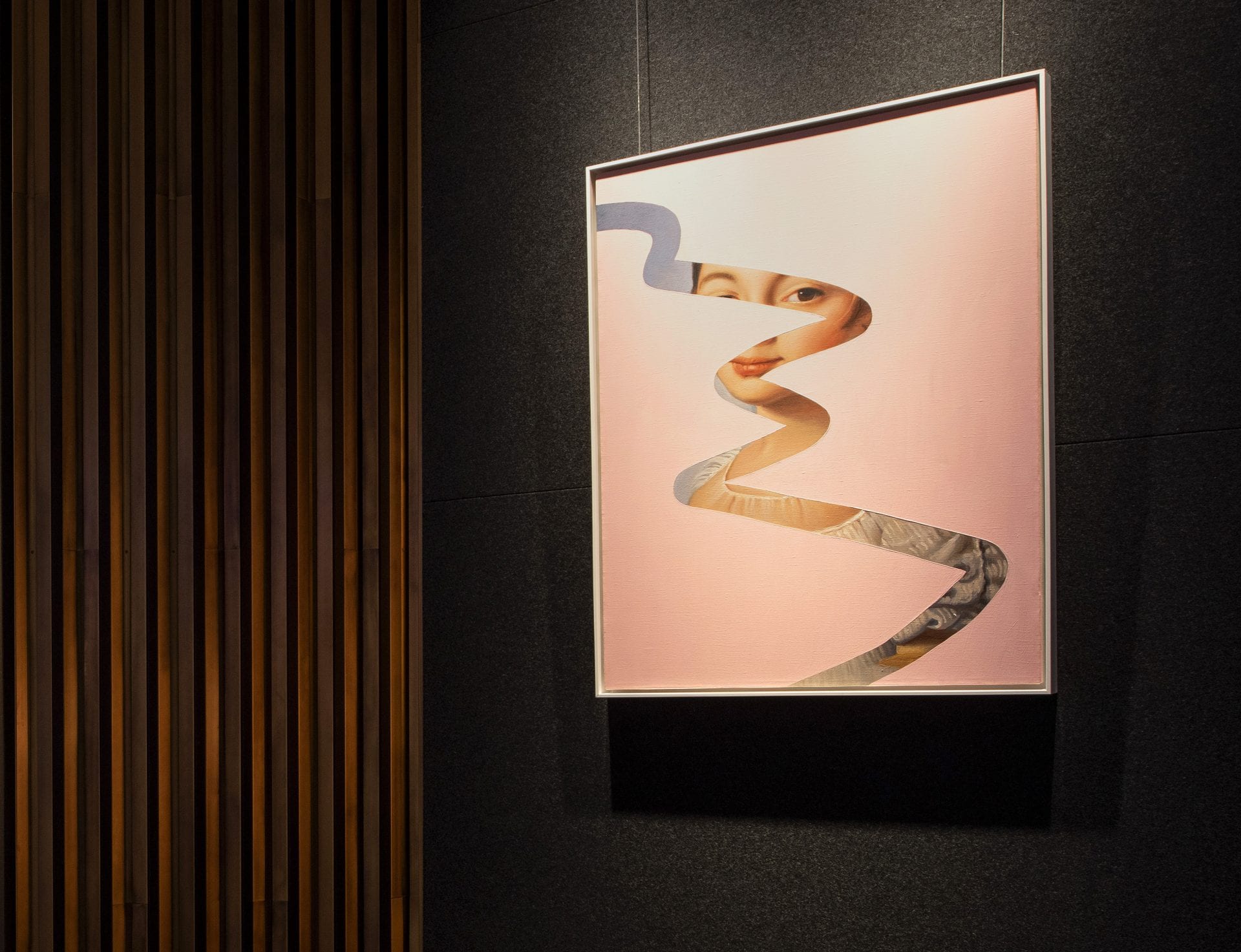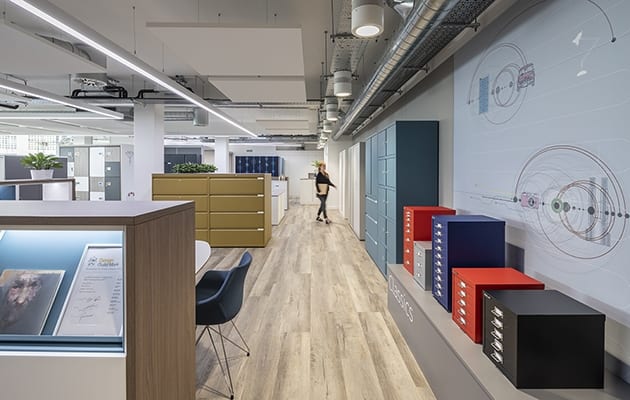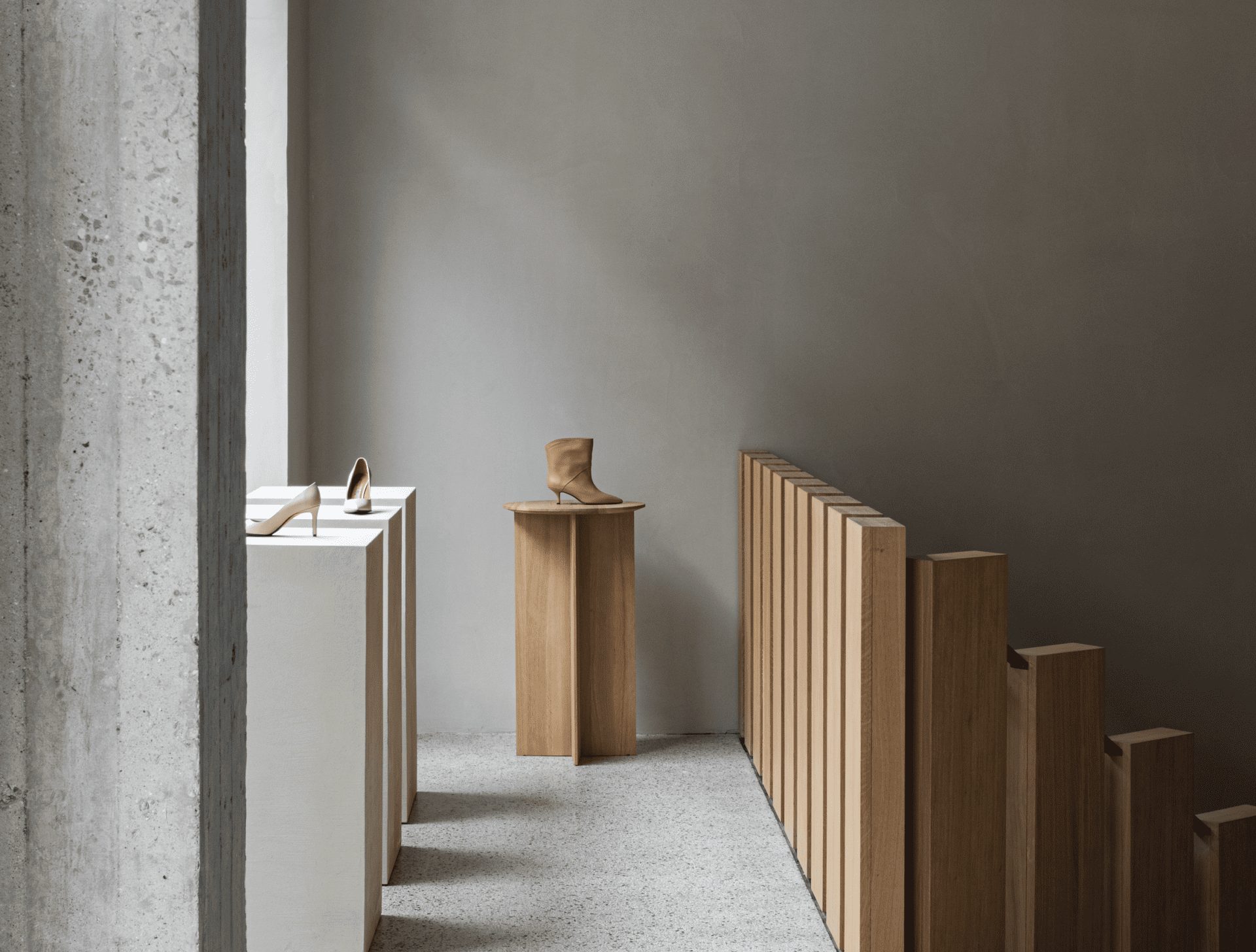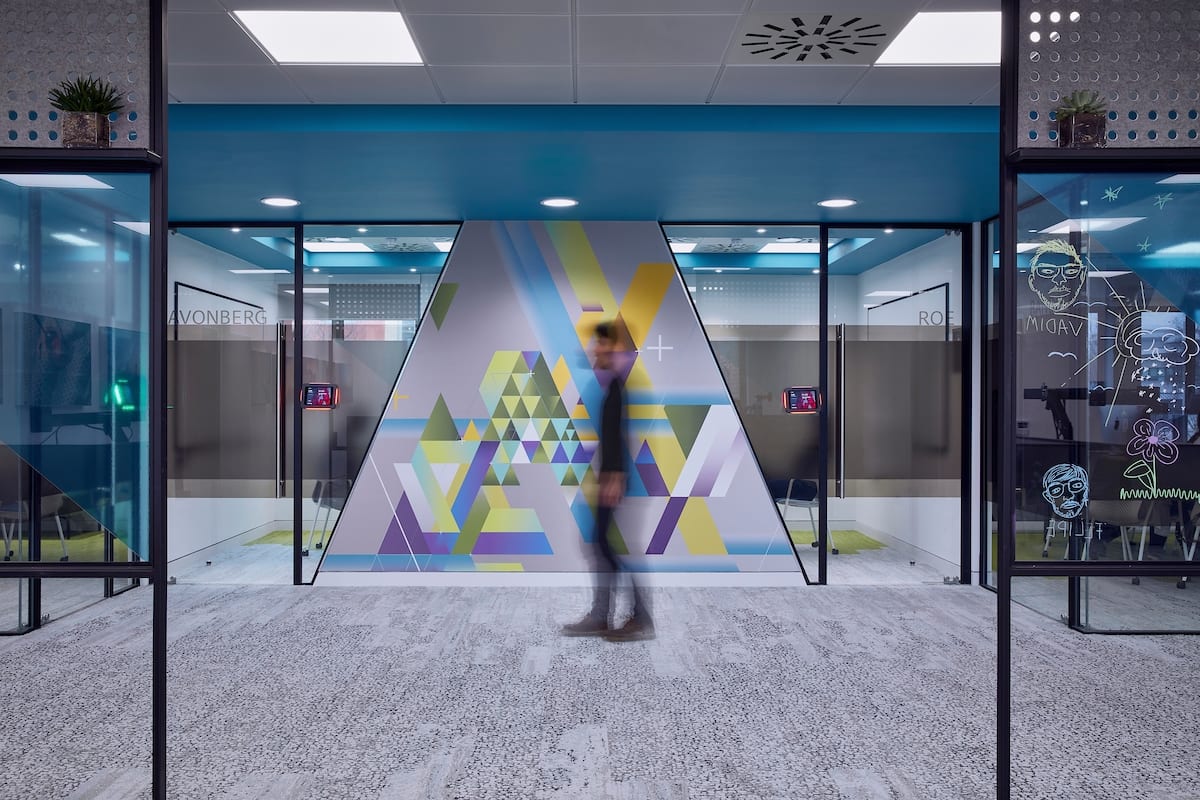 PostPanic gets the wow factor|A casual reception, with Marc Newson Nimrod chairs, leads into the grandstand area with its communal table, used for meetings and screenings|Massive pivoting oak doors afford some privacy to the downstairs meeting room|The ‘futuristic grotto’ is cocooned in brown carpet – it even creeps up the table’s base – set off by blue DAR chairs|In the studio, ‘energising’ green veneer was chosen for work tables and storage, while services were left exposed for an industrial look|Mirrors in the edit suite give the illusion of an endless room; clients can sit in the little nook to watch clips|Richly coloured Persian-esque carpets contrast with the concrete resin floors and concrete columns||
PostPanic gets the wow factor|A casual reception, with Marc Newson Nimrod chairs, leads into the grandstand area with its communal table, used for meetings and screenings|Massive pivoting oak doors afford some privacy to the downstairs meeting room|The ‘futuristic grotto’ is cocooned in brown carpet – it even creeps up the table’s base – set off by blue DAR chairs|In the studio, ‘energising’ green veneer was chosen for work tables and storage, while services were left exposed for an industrial look|Mirrors in the edit suite give the illusion of an endless room; clients can sit in the little nook to watch clips|Richly coloured Persian-esque carpets contrast with the concrete resin floors and concrete columns||
A young animation and production house in the Netherlands gets the wow factor on a shoestring
Generally speaking, an inspired designer + low budgets + a client willing to take risks = a pretty wowzers office. The Dutch seem to be particularly good at this equation, as is the case with design animation studio PostPanic in Amsterdam, whipped up by Maurice Mentjens.
We’ve seen this scenario play itself out over and over again in the pages of onoffice and its worth banging on about it a bit more: bespoke design solutions inspired by low budgets often seem to far exceed what might have materialised if money wasn’t such a concern. Sure, there may be a few more tulip chairs and Barcelona lounges if the sky’s the limit on cash – but who really cares when you can have an office like PostPanic’s instead?
It was this rationale that drew Maurice Mentjens to the project in the first place – though he is the first to admit that transforming nearly 600sq m of office space on a budget of ¤30,000 can be a tricky business.
“It was interesting. PostPanic wanted to create a kind of playground with all sorts of creative and artistic interventions,” says Mentjens.
Its projects are focused on images and perception so the design and layout of the studio directly influence their output. Plus, as with every company of this ilk, the office needed to reflect the studio’s creative flair and scream: “we’re amazing”.
“They’re much more daring because they’re young – so the job was challenging because they wanted something outrageous and completely different. I had to do something to make a strong impression but of course, with very little money. It’s the story of my life,” he chuckles.
The base building was brand new, with columns supporting the concrete structure and large windows in the slanted facade overlooking the river IJ. Essentially, Mentjens had as his raw material a massive empty room on the ground floor, with five-metre-high ceilings. He then got on with the business of carving out PostPanic’s new home.
Since the company does all animation and production in-house, the brief called for clearly defined areas for the various teams while also taking into account that the workforce fluctuates from 14 to 40 people depending on the different stages of production. Mentjens used the concrete columns as a departure point for defining each area – the production room, meeting room and staff room all measure the span between two columns and the newly created mezzanine holds a studio measuring twice this area, which provides the required floor space without compromising the feeling of openness.
“I had to design something that would make a strong impression but, of course, with very little money. It’s the story of my life”
The open space on the ground floor is all about functional, bold elements and was intended to feel like the company’s ‘living room’ – albeit a concrete living room. Wedged between two columns is a monumental oak grandstand facing a suspended screen (hanging over the detached bar, natch) for movies and seminars.
In front of this is a diagonally placed 16-seater table (5×1.2m) meant for reading and dining, with a gutter down its centre for storing magazines and books. A starburst of fluorescent light on the ceiling makes a nice accent against the polished concrete floors.
“One of the things that was very difficult was the lighting because it’s usually so expensive,” Mentjens explains. “That’s why I came up with the idea of the fluorescent light on the ceiling – because it was a very cheap and an easy way to solve the problem.”
The adjacent production room is a semi-open space covered with red, Persian-style carpets, which softens the space and helps with acoustics too. In fact, carpet pops up quite a bit in this project, and it’s a good thing because it counters all the cold concrete and glossy veneer.
The ground floor meeting room, aptly described by Mentjens as a “futuristic grotto” and separated from the main hall by wooden pivot doors, has lovely fluid lines because the floor, walls and table are carpeted as a single object. The edit room (with mirrored walls to invoke an illusion of endless space) has a carpeted niche in one of the walls for clients to sit and watch clips.
Multi-functionality is also a theme in Mentjens’ work. For example, two wooden beams serve both as a bookcase and a demarcation between the kitchen and the production room. The grandstand doubles as the stair up to the first floor mezzanine, and extends above the landing to form a cupboard for equipment. In the staff room, a desk’s voluminous table legs hold more storage.
“I do that double function most of the time,” says Mentjens. “I’ve done that since I was at art academy – hiding things within architectural or sculptural volumes – because, truthfully, I don’t like most objects.”
The first floor studio has three large tables with eight workplaces each. Colour was key in this space, and Mentjens felt green gave the right feeling to the floors, walls and balustrade (which has cupboards to hide more of the dreaded objects).
“Colour is a very important thing while they’re working. I wanted to use green because it’s very calm and fresh – it gives good energy.” And since most employees have little more than a laptop, belongings can be stored in trolleys underneath the tables, so it’s relatively easy to change the formation of the teams.
However, Mentjens isn’t convinced that open-plan working is right for everybody – in fact he has very strong opinions about the current trends in workplace design: “Maybe I’m old fashioned, but I’m very easily distracted and I’ll talk all day if I can. All these workplaces with 20 or 30 people working on one desk, its rubbish.”
But in this case, he feels an open office is the right solution: “A lot of time, I don’t think it works, but at PostPanic it works very well. They are very concentrated people, they’re using the space as it was intended to be used and it’s one big happy family.” All in all, Mentjen’s conceptual approach to the design has been a success in that different atmospheres come together as one PostPanic world – and maybe that’s because he enjoyed himself while he did it. “I would love to do a few of these projects every year because the clients are free. It was very interesting and I wish all the jobs could be like that!”































